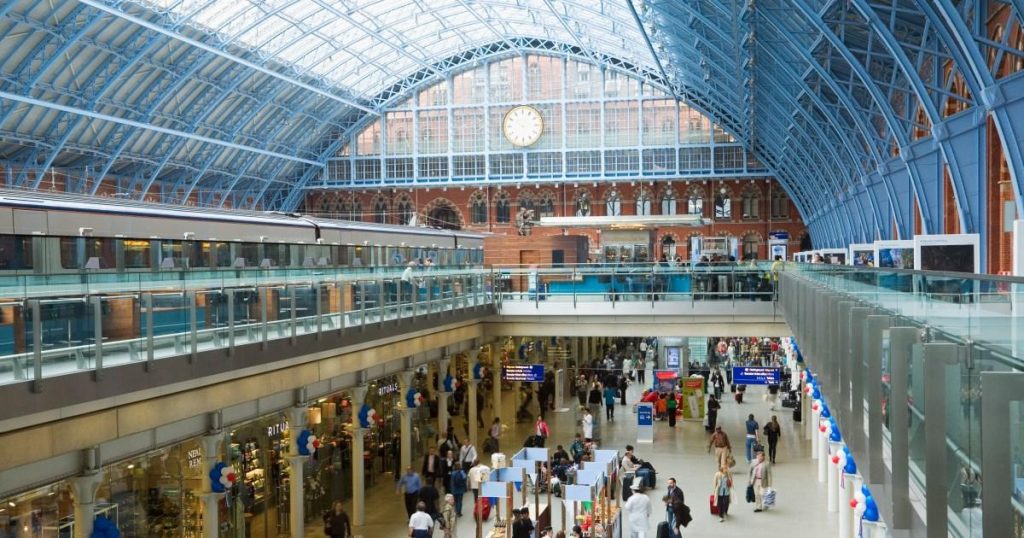1. A Walking Tour of London’s Engineering Marvels:
Forget the crowded Underground; a curated walking tour unveils 12 iconic engineering landmarks within central London. Starting at Farringdon, this pedestrian journey celebrates both renowned and hidden gems, demonstrating that the best way to experience a city is often on foot. This initiative, spearheaded by Footways, encourages a shift away from algorithmic travel planning towards a more intimate and enriching exploration of the urban landscape. The route highlights the historical significance, innovative design, and enduring impact of these structures, offering a unique perspective on London’s evolution.
2. Victorian Grandeur and Postal Secrets:
The tour commences with St Pancras Station, a masterpiece of Victorian engineering. Its magnificent train shed, with its expansive wrought-iron roof, exemplifies the ambition and ingenuity of the era. The station’s recent refurbishment blends historical preservation with modern functionality, serving as a testament to the city’s ability to adapt and evolve. Next, the route delves into the hidden world of Mail Rail, a subterranean postal network that operated for decades beneath the bustling streets. This ingenious system, utilizing driverless electric trains, showcases the innovative solutions employed to address the challenges of urban logistics. The construction of Mail Rail itself employed groundbreaking techniques like the Greathead Shield System, which minimized risks during tunnel excavation.
3. Iconic Bridges and Urban Evolution:
Tower Bridge, an internationally recognized symbol of London, is a highlight of the tour. Its combined bascule and suspension design, innovative for its time, allows for both road traffic and river navigation. The bridge’s transition from steam-powered hydraulics to a modern electro-hydraulic system underscores the continuous adaptation of engineering solutions. The tour then shifts focus to remnants of the Roman Wall, offering a glimpse into London’s ancient past. This ancient fortification shaped the city’s early development and continues to influence its urban fabric. The route also acknowledges the River Fleet, a once-significant waterway now relegated to a subterranean sewer system, demonstrating the evolving relationship between urban development and natural resources.
4. Sanitation, Railways, and Commemorative Statues:
The Golden Jubilee Bridges, sleek and modern footbridges adjacent to the Hungerford Railway Bridge, stand as a testament to both contemporary design and historical context. Their construction was indirectly linked to the "Great Stink" of 1858, which prompted Sir Joseph Bazalgette’s groundbreaking sewer system, revolutionizing urban sanitation. Victoria Station, a bustling transport hub, exemplifies the complexities of urban infrastructure, accommodating millions of passengers annually. The statue of Isambard Kingdom Brunel at Paddington Station pays homage to the visionary engineer whose contributions shaped Britain’s railway network. This commemorative presence highlights the importance of recognizing the individuals behind transformative engineering projects.
5. Urban Motorways, Canals, and Market Transformations:
The Westway, a controversial elevated motorway, stands as a reminder of the trade-offs between urban development and community impact. Its construction, though innovative, resulted in significant disruption and displacement, prompting important conversations about urban planning. The Cumberland Turn Basin, a quiet corner of Regent’s Park, reveals a hidden layer of London’s canal history. The filled-in canal branch, once a vital artery for commerce, now lies beneath the surface, a testament to the changing needs of the city. Camden Lock and Market, a vibrant cultural hub, occupies the site of a former goods depot, showcasing the repurposing of industrial infrastructure for contemporary use. The ingenious winch system used to overcome the steep incline to Chalk Farm highlights the resourcefulness of early railway engineers.
6. Modern Bridges and Historical Waterworks:
The Somers Town Bridge, a modern pedestrian bridge, connects two green spaces, symbolizing the integration of nature into urban environments. Its innovative design, with supports curving above the deck, prioritizes both aesthetics and unobstructed views. The bridge also offers a glimpse of the St Pancras Waterpoint, a reminder of the infrastructure required to support steam-powered trains. This walking tour, weaving together historical context, engineering innovation, and urban transformation, offers a unique and enriching perspective on London’s diverse landscape, inviting exploration and appreciation of the city’s complex evolution. Each stop on the route tells a story, revealing layers of history and highlighting the ingenuity of engineers who shaped the city we know today.











